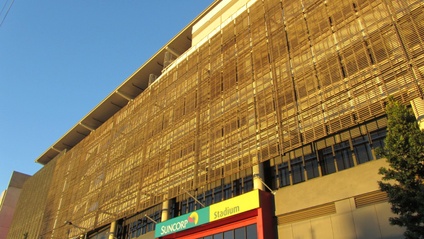
Architectural Timber Battens
This CPD course is intended to assist a professional designer deliver a successful project that incorporates architecturtal battens in a way that is safe and ages very gracefully. It covers all the matters that you must consider, including species, grade, profile, fastening, and sealing. It concludes with a number of examples of stunning batten projects.
- Course
- By Ted Stubbersfield
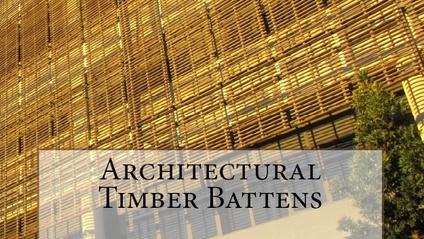
Architectural Timber Battens
The use of Architectural Timber Battens has increased in popularity over recent years and with good reason, they can be strikingly effective. But how do you do them well? When I asked to advise a firm of Architects in Brisbane I could find nothing of any consequence on the subject. I had to research it from scratch with the help of many timber specialists.
- Digital file
- 1 file
- By Ted Stubbersfield
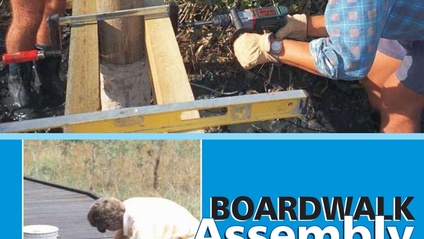
Boardwalk Built on Bearers Construction
A companion document to the Boardwalk Design Guide, this manual outlines best construction practice for a timber boardwalk built on piles/posts and using bearers. When designing a boardwalks using Outdoor Structures' system it is important to specify “Built in accordance with Outdoor Structures boardwalk construction guide”. This is a reference by which to determine whether a structure has been built in a workmanlike manner.
- Digital file
- 1 file
- By Ted Stubbersfield
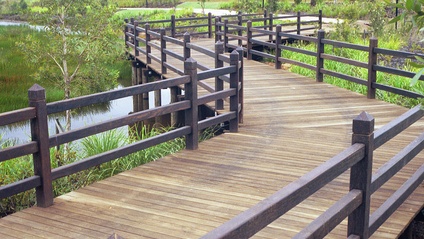
Boardwalk Design
This course will teach you how to avoid the common shortcomings that can lead to premature degradation of external timber structures particularly boardwalks.
- Course
- By Ted Stubbersfield

Boardwalk Design Guide
My Boardwalk Design Guideis unmatched in the comprehensive way it deals with the subject. It was written for me by Australia's leading specialist timber engineer as part of a federally funded research project. Subjects addressed include the basics of timber, practical matters that make the boardwalk successful such as width and handrail heights. Also included is the engineering to work with the recommended geometry. Read in conjunction with my Deck and Boardwalk Design Essentials.
- Digital file
- 1 file
- By Ted Stubbersfield
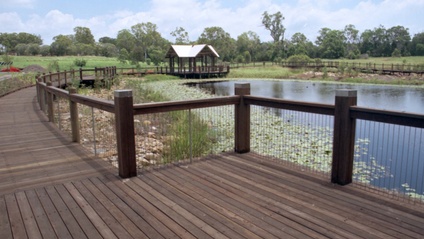
Boardwalk timber specification and design package
This bundle comprises two courses and four guides
- Bundle
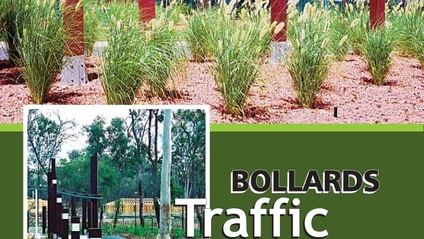
Bollards, Traffic Control, and Fencing
The Timber Bollards Design Guide has over 25 pages full of information covering the place of bollards in landscape design, It includes a variety of designs including posts and bollard caps, the Installation of bollards, treatment of timber and the maintenance of exterior timber. It discusses the different applications you might experience, park, urban or esplanade, and how that will affect your design.
- Digital file
- 1 file
- By Ted Stubbersfield
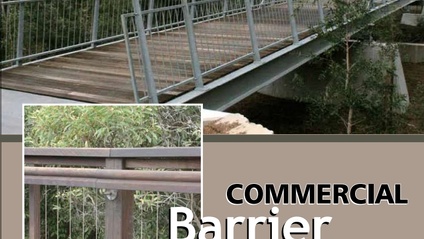
Commercial Barrier Guide
My Commercial Barrier Guide is a invaluable in the way it discusses commercial barriers. It was written for me by Australia's leading specialist timber engineer as part of a federally funded research project. It distils 20 years of building bridges etc., which had rails which varied from basic to very attractive. It contains span charts Follow it to the letter to achieve an outcome beyond your expectations. Read in conjunction with my Handrail guide.
- Digital file
- 1 file
- By Ted Stubbersfield
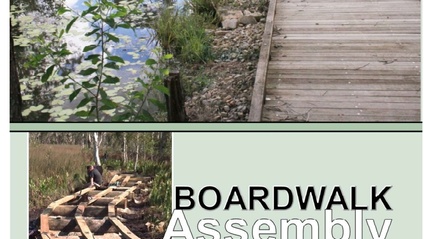
Construction Guide for a Boardwalk Built on Bedlogs
Also a companion document to the Boardwalk Design Guide, this manual outlines best construction practice for a boardwalk built on bedlogs. When designing a bedlog boardwalks using Outdoor Structures system it is important to specify “Built in accordance with Outdoor Structures boardwalk construction guide”. This is a reference by which to determine whether a structure has been built in a workmanlike manner.
- Digital file
- 1 file
- By Ted Stubbersfield

Deck and Boardwalk Design Essentials
The ‘why’ and ‘how’ of designing decks and boardwalks for safety and durability. This guide includes countless deck design and construction tips, advice, and common, but potentially very costly, mistakes to avoid. The book concludes with a design checklist that allows a timber novice to avoid the usual issues that impact longevity
- Digital file
- 3 files
- By Ted Stubbersfield
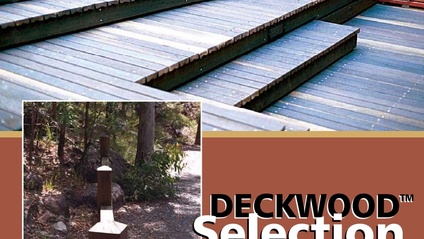
Deckwood Selection Guide
My Boardwalk Design Guide is unmatched in the comprehensive way it deals with the subject of commercial decking. It was written for me by Australia's leading specialist timber engineer as part of a federally funded research project. It covers best practice in decking design und tables for different load applications. Follow it to the letter to achieve an outcome beyond your expectations. Read in conjunction with my Deck and Boardwalk Design Essentials.
- Digital file
- 1 file
- By Ted Stubbersfield
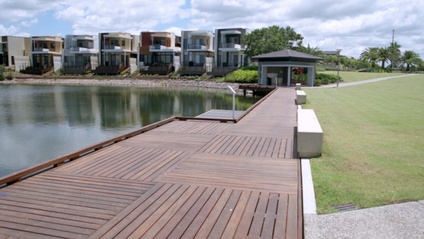
Designing Commercial Decks for Durability
This course will teach you how to avoid the common shortcomings that can lead to premature degradation of external timber structures and landscaping.
- Course
- By Ted Stubbersfield
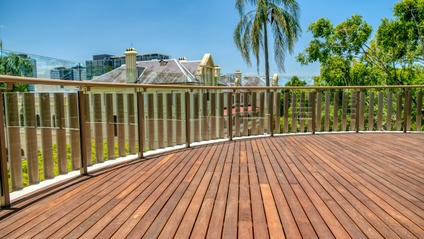
Domestic Deck Design and Construction
Your course draws on many years of experience of involvement with fully weather exposed timber structures. Since 2012 I have been working as a consultant and have had to inspect many domestic decks that have given problems. Invariably it is because the installer has not read very basic guides on how to do it. This course will teach you how to do a decking project that will age gracefully with minimal maintenance.
- Course
- By Ted Stubbersfield

Domestic and Commercial Decking Design
This bundle includes both the domestic and the commercial deck courses and associated guides and gives you the opportunity to purchase them at a discount.
- Bundle
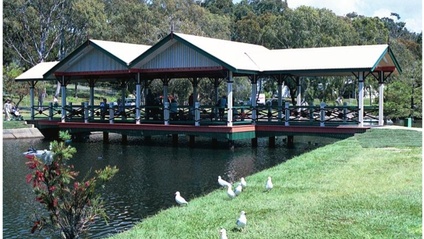
External Timber 101
This course will teach you how to specify Australian hardwood to ensure timber suitable for purpose is delivered
- Course
- By Ted Stubbersfield
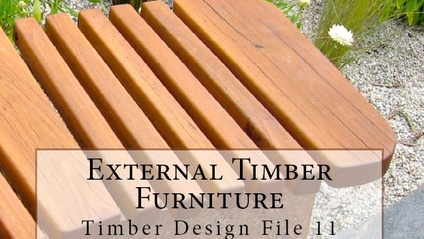
External Timber Furniture
External Timber Furniture, explains how to detail, finish and maintain both robust public furniture and refined architectural pieces in hardwood, cypress and pine. It will ensure that your designs stay together and age gracefully. The book includes a design checklist. Over 80 images clearly illustrate the points being made.
- Digital file
- 2 files
- By Ted Stubbersfield
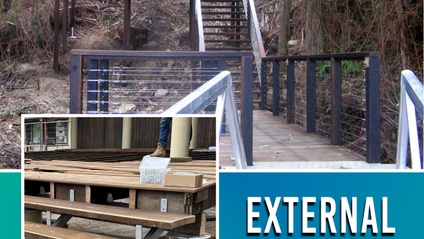
External Timber Steps
My guide to external timber steps provides you with a specification and recommended species that will actually work in a weather exposed situation. Best practice in construction is also discussed as well as the requirements of the NCC.
- Digital file
- 1 file
- By Ted Stubbersfield

Full package of 23 timber design guides
This bundle contains all the 23 technical guides listed on the teachable site but at a heavily discounted price.
- Bundle
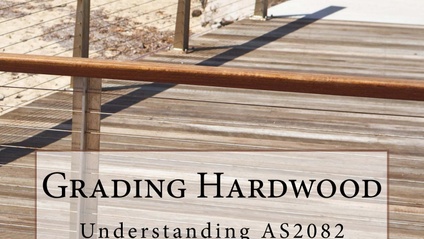
Grading Hardwood
If an engineer specified black steel so badly rusted that it only had 40% of its strength remaining and expected it to be durable when used in a coastal environment we would think that strange. Yet this is exactly what is being done with hardwood. This informative hardwood timber guide explains what the F ratings actually mean and reinforces the need to highly qualify your specification when using AS2082.
- Digital file
- 1 file
- By Ted Stubbersfield
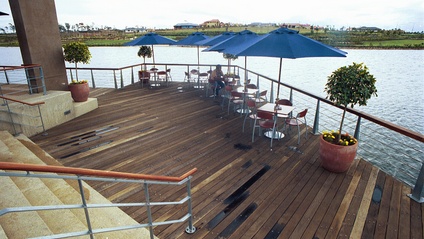
Grading Hardwood: Understanding AS2082 and how it relates to external applications
Asset owners are loosing confidence in timber when used in external applications. I will argue in my course, Grading Hardwood: Understanding AS2082 and how it relates to external applications, that this is largely through specifying timber inappropriately, which is further compounded by using poor construction practices. The standard is only concerned with strength on the day of milling, you need to be specifying in such a way that those properties are relevant 20 or thirty years afterwards. They will be when ubnder a roof but not necessarily when exposed to the elements. When you appreciate the limitations of AS2082 you will be willing to adopt performance based specifications that are appropriate for a more challenging application.
- Course
- By Ted Stubbersfield
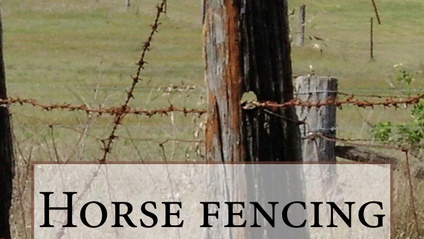
Horse Fencing
This book started life as recommendations for the use of Australian hardwoods for a horse stud in Japan with multimillion dollar race horses. Obviously injury to any of these would have been very expensive. I learned that designing a fence for horses that will not injure them is very difficult. This small book guides you through the decision-making process of designing your horse fence.
- Digital file
- 1 file
- By Ted Stubbersfield
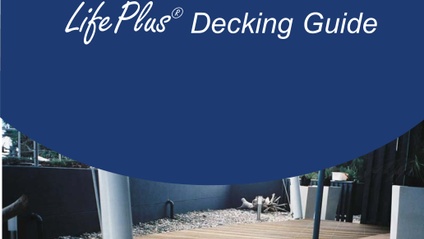
LifePlus Decking Guide
The LifePlus Decking Guide is an indepth guide to building a fully weather exposed timber deck that requires minimal maintenance over a long service life. It does this while incorporating good slip resistance.
- Digital file
- 1 file
- By Ted Stubbersfield
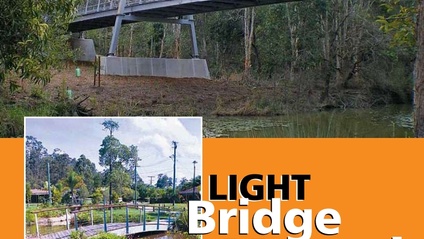
Light Bridge Manual
My Light Bridge Manual is a very valuable guide in the way it discusses light foot and vehicle bridges and their abutments. It was written for me by Australia's leading specialist timber engineer as part of a federally funded research project. The book links in with a number of standard bridges I made. Follow it to the letter to achieve an outcome beyond your expectations. Read in conjunction with my Timber Footbridges guide.
- Digital file
- 1 file
- By Ted Stubbersfield
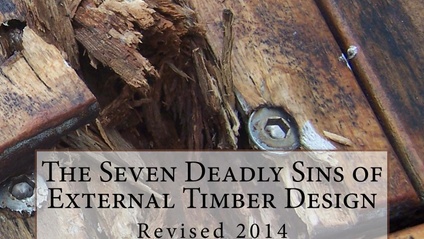
The Seven Deadly Sins of External Timber Design
This guide is the companion of the CPD course of the same name. It explains and illustrates the seven issues I see constantly occurring in weather-exposed timber structures and landscaping. They are illustrated with many images and the guide explains how to remove them from your projects. Your client will receive outcomes that age gracefully and with less maintenance than is often experienced. You will be amazed at how logical it is
- Digital file
- 1 file
- By Ted Stubbersfield
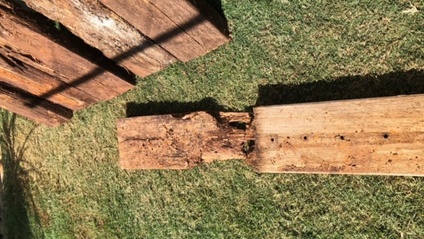
The Seven Deadly Sins of External Timber Design
This course will teach you how to avoid the common shortcomings that can lead to premature degradation of external timber structures and landscaping.
- Course
- By Ted Stubbersfield
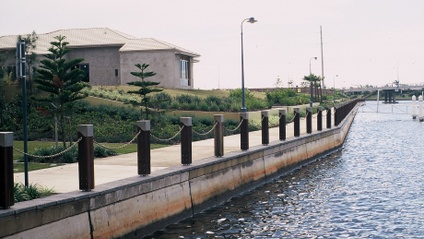
Timber Bollards
Your course will teach you what is necessary to deliver a long lived timber bollard that is fit for purpose. To allow you to complete this course at your convenience, it is broken into five short segments: 1. Background to this course and different bollard applications 2. Case histories 3. General observations 4. Discussion of issues with the IPWEA bollard drawing, and 5. (Optional) How we can help you.
- Course
- By Ted Stubbersfield
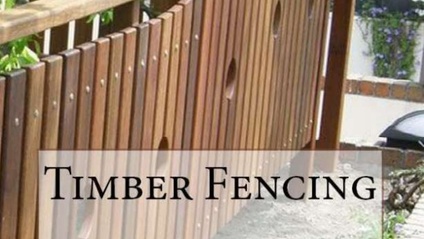
Timber Fences
Building a quality timber fence can be difficult as there are no standards for the timber. This book is intended to assist professional designers that require a higher standard product than a domestic fence. It will allow them to design and specify a product which will perform well and be repeatable each time. This guide covers pine, Cypress and hardwood and contains useful specifications.
- Digital file
- 1 file
- By Ted Stubbersfield
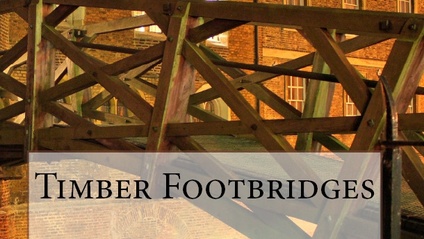
Timber Footbridges
I built hundreds of timber and timber and steel footbridges through my old company, Outdoor Structures Australia. My bridges were well above the average product for design detailing and longevity. This guide will take you through the complexity of doing it well and point out where shortcuts are made. It finishes with a design checklist to ensure you get it right.
- Digital file
- 3 files
- By Ted Stubbersfield
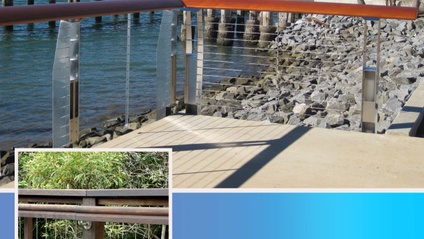
Timber Handrail
My guide to timber handrail with assist you in designing a custom handrail that is trouble free. Read and understand the guide then complete the design checklist and it will remove all the mystery for you. It also deals with stand LOSP treated domestic rail and shows how to avoid the problems that lead to a shortened life.
- Digital file
- 2 files
- By Ted Stubbersfield
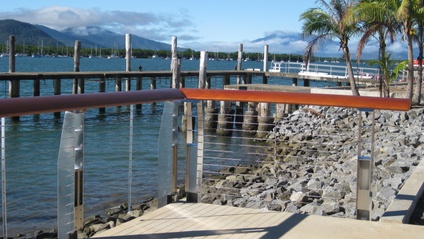
Timber Handrail Design and Construction
While this CPD course on timber handrail does cover domestic pine rail that is usually seen in domestic applications, it is especially focused on commercial rails. You will learn the following from a very experienced presenter: • Types of handrails and balustrades • Compliance issues driving the selection of handrails balustrades • Timber quality and grades of timber • Timber - standard sizes and how to use these in your design/detailing • Timber preservation • How to maximise the life of timber structures through quality detailing • Methods of connection handrail and things to be aware of, and • Quality and design outcomes
- Course
- By Ted Stubbersfield

Timber Joints
This guide looks at different ways of joining timber. It looks at the historic development of particular joints and fixing and modern-day requirements. All in all, it is an interesting read.
- Digital file
- 1 file
- By Ted Stubbersfield
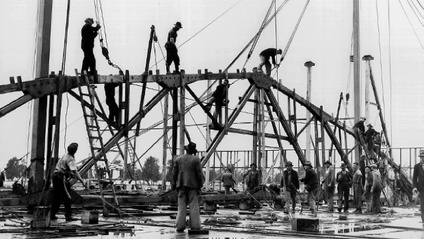
Timber Joints
- Course
- By Ted Stubbersfield
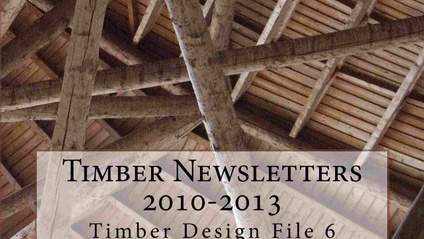
Timber Newsletters 2010 to 2013
The first four years of my very useful newsletters (2010 to 2013) are put together in this one invaluable publication. Each edition contains useful information on aspects of timber design that you will not find in a textbook. They are very interesting reading with lots of examples of what to do and, very importantly, what not to do. It contains hundreds of images.
- Digital file
- 1 file
- By Ted Stubbersfield
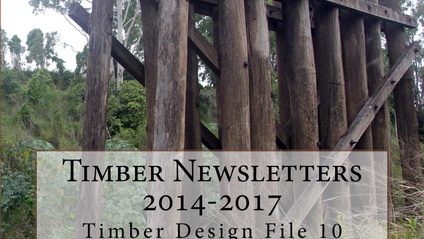
Timber Newsletters 2014 to 2017
The second four years of my very useful newsletters (2014 to 2017) are put together in this one invaluable publication. Each edition contains information on aspects of timber design that you will not find in a textbook. They make very interesting reading with lots of examples of what to do and, very importantly, what not to do. It contains hundreds of images.
- Digital file
- 1 file
- By Ted Stubbersfield
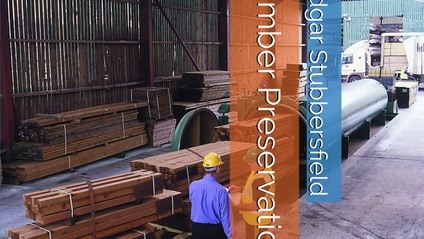
Timber Preservation for Weather Exposed Structures
My CPD course, Timber Preservation, will explain what you need to know about AS/NZS 1604.1 Preservative-treated wood-based products, Part 1: Products and treatment. You will learn what it can do and more importantly what it will not do. Treatment will not compensate for poor species choice, inappropriate grade specification and poor building practice. All must considered as a total solution to timber durability. Your learning outcomes are: Learning Outcome 1. Understanding what sapwood, heartwood and heart is Learning Outcome 2, The problem of heartwood Learning Outcome 3. Understanding H5 and H6 treatment Learning Outcome 4. Limitations of treatment on sawn timber Learning Outcome 5. Combining natural durability with treatment Learning Outcome 6. Understanding some myths about treatment Learning Outcome 7. The dangers of CCA Learning Outcome 8. Codemark instead of Australian Standards
- Course
- By Ted Stubbersfield

Timber Preservation guide
My Timber Preservation Guide has been continually updated through the various standard changes since 2010. It will warn you about the limitations of timber treatment. This edition includes comment on: • Increased use of spraying and dipping; • Increased use of glueline preservatives in engineered wood; • Codemarked timber selling alongside of Australian Standard timber; • Need for documentation of treated timber; and, • Recognition of the need to do due diligence when purchasing.
- Digital file
- 1 file
- By Ted Stubbersfield
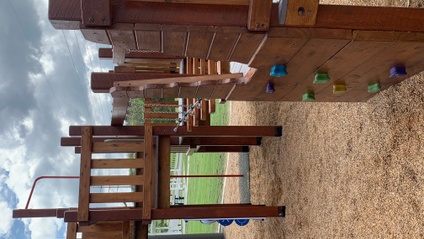
Timber in Playgrounds
Timber in Playgrounds provides a comprehensive guide to designing, building and inspecting a timber playground that will be safe and very low maintenance. This guide leads you through the required critical decisions: Including timber selection and specification, engaging with the ground, fasteners, construction details, maintenance and inspection. Case histories of well done playgrounds and a design checklist complete this guide.
- Digital file
- 1 file
- By Ted Stubbersfield